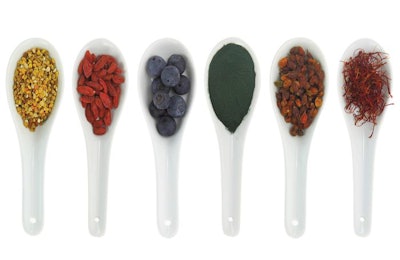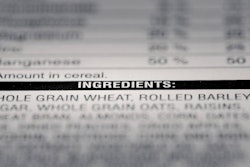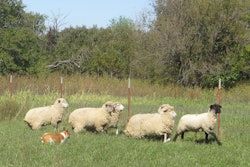
High protein has been an ingredient trend for pet food and human food for several years now, and it’s still going strong for both, according to speakers at Petfood Forum and Petfood Innovation Workshop 2018, held April 23-25, in Kansas City, Missouri, USA. But did you know that honey is an up-and-coming ingredient, with sales of dog foods containing honey growing 72 percent from March 2017 to 2018?
That was just one data point provided by James Restivo, client director and pet lead for Nielsen, who also showed that high protein products account for 10.8 percent of the US pet food market and are still growing 5 percent a year. For comparison, honey accounts for only 1 percent of dog food sold to date; it doesn’t yet show up in cat food, but for cats, high protein foods are still rising 18 percent annually.
Restivo presented the opening session for Petfood Innovation Workshop: New Product Development Journey on April 23, and in addition to data, he shared an insightful piece of advice: given the competition in today’s pet food market, you can’t make new product development decisions based on instinct alone; for successful launches, you need to use data science.
Popular pet food ingredients: usage, growth, claims
Restivo and several Petfood Forum speakers presented plenty of data science in the form of sales, growth and trend numbers related to ingredient claims. For example, David Sprinkle, research director for Packaged Facts, said that human food shoppers are seeking high protein (40 percent), high fiber (36 percent), high vitamins or minerals (28 percent), superfoods or “superfruits” (19 percent) and probiotics (16 percent).
We know many of these same ingredients are popular in pet foods, too, and Restivo provided confirmation. Besides the data on high protein and honey usage, he also highlighted these:
- Among pet foods with meat listed as the first ingredient, 64 percent listed more than one protein source.
- For specific sources, chicken was tops at 80 percent (growing 2 percent at year); fish was at 52 percent usage and 3 percent growth; turkey had 48 percent and 1 percent growth; beef, 39 percent and 5 percent; and lamb, 13 percent and 5 percent.
- Several novel proteins still have great potential, with quail increasing 361 percent a year and elk, 1,113 percent (rabbit and venison aren’t slackers, either, with 36 percent and 21 percent growth, respectively).
- Usage of superfoods continues to increase, including sales growth of 13 percent for pet foods with sweet potato, 8 percent for cranberry and 2 percent for blueberry.
- Sales of dog foods with probiotics soared 139 percent from 2017 to 2018. Shoppers buying dog foods with probiotics spent two times as much per trip, and 16 percent of US households buying dog food purchased products with prebiotics or probiotics. In cat food, sales of products with probiotics are at only 1 percent but skyrocketed 170 percent.
- For dog food, all-natural claims still hold a 21 percent share and are growing 8 percent, while non-GMO claims, tiny at only 0.5 percent, are increasing 29 percent a year.
- In cat food, “free from” claims dominate (35 percent for soy, 30 percent for artificial colors, with growth at 3 percent and 6 percent respectively), while sales of products with superfoods like sweet potato (19 percent growth), cranberry (54 percent) and kale (36 percent) are rising fast.
- Though “joint health” claims on pet foods have decreased 6 percent over the past year, sales of products with related ingredients have increased — 3 percent for glucosamine and 6 percent for chondroitin sulfate.
Restivo shared these last data to make the point that for today’s pet owners, the ingredients on a pet food label matter more than do product claims.
Pet food ingredients on the rise — plus tried-and-true grain free
While she didn’t provide data, Natasha Davis, client service manager for GfK, shared multiple examples of pet food products now incorporating some of the same functional ingredients appearing in more and more human foods, including turmeric, coconut in various forms and, again, honey.
Davis did share data on what’s become a tried-and-true ingredient category for pet food, or rather, a category lacking certain ingredients — in this case, grains. In the US pet specialty channel, grain-free pet foods reached US$3.4 billion in sales in 2017, representing a 43 percent market share and year-over-year growth of 10 percent. The average price of grain-free pet foods sold in the channel was US$3.07 per pound, compared to an average of US$2.55 per pound for all pet foods and treats in that channel.
Such dominance of grain-free pet foods is not limited to the pet specialty channel; according to data compiled in 2017 from the former Dog and Cat Food Ingredient Center, 44 percent of dog foods and 47 percent of cat foods sold in the US overall did not include any grains in their ingredient decks.
What did they include? Ingredients such as pulses (peas, lentils, chickpeas and other legumes), tapioca and many types and forms of potatoes, including the aforementioned sweet potatoes. Isaac Matthews, director of the pet food ingredient division for Lansing Trade Group, discussed the availability and other factors associated with these ingredients during his Petfood Forum presentation on the evolution and future of the grain-free pet food market.
Grain-free ingredients: supply and pricing are key
One of Matthews’ key points was that the ingredients often substituting for grains in pet food are subject to food grade (as in human food) market dynamics. Farmers do not grow “feed grade” crops; what’s available to the pet food market is what’s left over from human food. So pricing of these ingredients is also a function of the food grade market, and neither yields nor quality have a direct connection to feed grade prices.
However, there has been a recent increase in production of some ingredients for pet food only, as well as untapped capacity in staple crops, Matthews said, and global production of and investment in vegetable ingredients that can add protein to pet foods (in addition to peas) is increasing. Pet food producers can alleviate pricing and supply concerns by entering into production contracts for specialty crops, making long-term “off-take” agreements and harnessing the collective buying power of several smaller companies to compete with the large companies that are now often buying directly from the ingredient sources.
The bottom line: grain-free pet food will be here a while, Matthews believes. Dogs are living longer, and their owners who have long fed them grain-free dog food are now loyal to the concept. They can also find grain-free pet foods in their local grocery store or Walmart, so convenience factors in. Continuing trends in human food play an influential role, too.


















